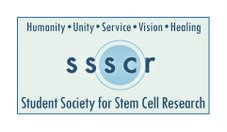Aggressive Therapy Best for Certain AML Patients
Updated: 7/31/2007 7:06:58 PM
Print Article Email Article
(HealthNewsDigest.
acute leukemia patients whose cancer cells show a genetic change that
usually predicts a swift return of the disease following remission
may remain disease-free longer when given aggressive therapy.
The findings apply to people with acute myeloid leukemia (AML) whose
cancer cells have normal-looking chromosomes and a gene mutation
called MLL-PTD.
Typically, these AML patients responded poorly following treatment
with older standard therapies, often relapsing within a year. Of AML
patients with normal chromosomes who lack the mutation, on the other
hand, four in 10 are cured.
The new study suggests that treating patients who have the mutation
with an aggressive therapy such as an autologous stem cell transplant
while they are in remission might significantly extend their disease-
free survival.
An autologous transplant uses stem cells taken from the patient's own
blood.
The research was led by investigators at the Ohio State University
Comprehensive Cancer Center. It is part of a larger study sponsored
by the Cancer and Leukemia Group B (CALGB), a clinical cooperative
group composed of oncologists from academic medical centers and
community hospitals across the nation.
The findings were published in a recent issue of the journal Blood.
"Our data is the first to show that AML patients with normal-looking
chromosomes and this mutation do as well when treated aggressively as
patients who don't have the mutation," says principal investigator
Dr. Clara D. Bloomfield, professor of internal medicine and an
internationally known AML specialist.
About 13,400 new cases of AML are expected this year, and about half
will have cancer cells with chromosomes that show distinctive damage.
The nature of that damage helps doctors determine a patient's therapy
and estimate the patient's prognosis.
The remaining AML cases have cancer cells with normal-looking
chromosomes. These cells lack the microscopic chromosome damage that
guide therapy.
In 1994, however, a team of researchers that included Bloomfield
discovered the MLL-PTD mutation in these patients. It was the first
clinically useful marker to be identified in cases of AML with normal-
looking chromosomes, and it was found to predict a short remission
and poor response to therapy. About 8 percent of AML patients with
normal-looking chromosomes have the mutation.
"Studies done eight to 10 years ago showed that nearly 100 percent of
these patients relapsed and died within two years," says first author
Susan P. Whitman, a research scientist at Ohio State's Comprehensive
Cancer Center.
This retrospective study set out to learn whether aggressive therapy
provided through two CALGB clinical trials benefits patients with the
mutation. It evaluated 238 people aged 18 to 59 with AML and normal-
looking chromosomes. Of these, 24 (10 percent) had the MLL-PTD
mutation.
All patients received an initial aggressive chemotherapy regimen
(i.e., induction therapy) to induce remission. Those who achieved
remission then received further aggressive therapy (i.e.,
consolidation therapy), usually an autologous stem cell transplant,
with a few receiving intensive chemotherapy.
Of the 24 patients with the mutation, 22 had a complete remission. Of
those, 13 relapsed within 1.4 years, but nine (41 percent) remained
in remission when the study ended, with disease-free periods ranging
from two to almost eight years.
"We believe that the use of aggressive consolidation therapy may have
contributed to the reduced number of early relapses in these
patients," Bloomfield says.
"We still must do larger studies to confirm these findings, to better
understand this disease and to develop curative targeted therapies."
Funding from the National Cancer Institute and the Coleman Leukemia
Research Foundation supported this research.
Other Ohio State researchers involved in this study were Amy S.
Ruppert, Guido Marcucci, Krzysztof Mrozek, Peter Paschka, Christian
Langer, Jing Wen, Tamara Vukosavljevic and Michael A. Caligiuri.
www.HealthNewsDiges
Read Original Article
http://www.dentalpl
«¤»¥«¤»§«¤»¥«¤»§«¤»¥«¤»«¤»¥«¤»§«¤»¥«¤»§«¤»¥«
¯¯¯¯¯¯¯¯¯¯¯¯¯¯¯¯¯¯¯¯¯¯¯¯¯¯¯¯¯¯¯¯¯¯¯¯¯¯¯¯¯¯¯¯
StemCells subscribers may also be interested in these sites:
Children's Neurobiological Solutions
http://www.CNSfoundation.org/
Cord Blood Registry
http://www.CordBlood.com/at.cgi?a=150123
The CNS Healing Group
http://groups.yahoo.com/group/CNS_Healing
____________________________________________
«¤»¥«¤»§«¤»¥«¤»§«¤»¥«¤»«¤»¥«¤»§«¤»¥«¤»§«¤»¥«
¯¯¯¯¯¯¯¯¯¯¯¯¯¯¯¯¯¯¯¯¯¯¯¯¯¯¯¯¯¯¯¯¯¯¯¯¯¯¯¯¯¯¯¯
Change settings via the Web (Yahoo! ID required)
Change settings via email: Switch delivery to Daily Digest | Switch format to Traditional
Visit Your Group | Yahoo! Groups Terms of Use | Unsubscribe
__,_._,___










